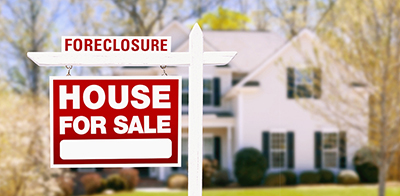
ATTOM: Foreclosure Activity Falls to Record Low

ATTOM, Irvine, Calif., released its Year-End 2021 U.S. Foreclosure Market Report, which shows foreclosure filings fell to their lowest level since 2005.
ATTOM reported foreclosure filings on 151,153 U.S. properties in 2021, down by 29 percent from 2020 and down 95 percent from a peak of nearly 2.9 million in 2010, to the lowest level since tracking began in 2005. Those properties represented 0.11 percent of all U.S. housing units, down from 0.16 percent in 2020 and down from a peak of 2.23 percent in 2010.
“The COVID-19 foreclosure tsunami that some people had anticipated is clearly not happening,” said Rick Sharga, executive vice president at RealtyTrac, an ATTOM company. “Government and mortgage industry efforts have prevented millions of unnecessary foreclosures, and while it’s likely that we’ll see a slight increase in the first quarter, we probably won’t see foreclosure activity back to normal levels before the end of 2022.”
The report also noted 17,971 U.S. properties with foreclosure filings in December, down 8 percent from the previous month but up 65 percent from a year ago.
The report said lenders repossessed 25,662 properties through foreclosure in 2021, down 49 percent from 2020 and down 98 percent from a peak of 1,050,500 in 2010, to the lowest level as far back as data is available — 2006.
“We believe that repossessions will continue to be lower than normal throughout 2022,” Sharga noted. “Homeowners have a record amount of equity – over $23 trillion – and over 87 percent of homeowners in foreclosure have positive equity. This means that most borrowers will have an opportunity to sell their house at a profit rather than lose everything to a foreclosure auction.”
States that saw the greatest number of REOs in 2021 included Illinois (3,472); Florida (2,287); California (1,839); Pennsylvania (1,293); and Texas (1,236). Metropolitan statistical areas with a population greater than 1 million that saw the greatest number of REOs in 2021 included Chicago (1,733); St. Louis (1,255); New York City (814); Baltimore; and Philadelphia (571 each).
Other report findings:
–Lenders started the foreclosure process on 92,346 U.S. properties in 2021, down 30 percent from 2020 and down 96 percent from a peak of 2,139,005 in 2009, to a record low.
–States that saw the greatest decline in foreclosure starts from last year included Maryland (down 81 percent); Oklahoma (down 70 percent); Idaho (down 64 percent); Nebraska (down 63 percent); and Connecticut (down 60 percent). Four states saw an annual increase in foreclosure starts: South Dakota (up 20 percent); Vermont (up 36 percent); North Dakota (up 71 percent); and Nevada (up 85 percent).
–Metropolitan statistical areas that saw the greatest declines in foreclosure starts from last year included Philadelphia, (down 56 percent); Washington, D.C. (down 52 percent); Charlotte, N.C. (down 51 percent); Cleveland, Ohio (down 42 percent); and Chicago (down 42 percent).
–States with the highest foreclosure rates in 2021 were Nevada (0.26 percent); Illinois (0.23 percent); Florida (0.21 percent); Delaware (0.21 percent); and New Jersey (0.19 percent).
–Among 220 metropolitan statistical areas with a population of at least 200,000, those with the highest foreclosure rates in 2021 were Cleveland (0.37 percent); Las Vegas, (0.31 percent); Lake Havasu, Ariz. (0.30 percent); Peoria, Ill. (0.30 percent); and Atlantic City, N.J. (0.29 percent).
–Properties foreclosed in the fourth quarter had been in the foreclosure process an average of 941 days, a 2 percent increase from the previous quarter and 10 percent increase from a year ago.
